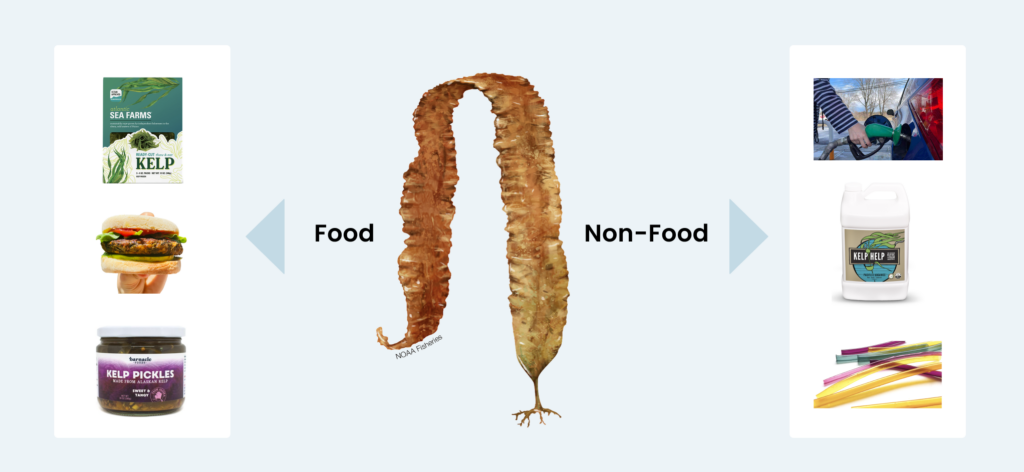Back to: Build Your Business
Once you know how much kelp you can expect to grow, you’ll need to do some thinking about the format in which you plan on selling your kelp and the different prices the market will bear for each format. There are currently two high-level sales segments that exist for kelp in the U.S.: food and non-food.

Raw kelp can be sold in a minimally-processed, fresh or frozen form directly to individual consumers or wholesale to restaurants. The pristine, trimmed blades of the kelp can be eaten raw or cooked as a vegetable or processed into a specialty, value-added product, like pickles or kimchi. Some companies are working with dried kelp, dehydrating the blade and crumbling it into seasonings. Others are stabilizing the kelp and using it as an ingredient, such as in a processed kelp burger or kelp jerky.
Stipes, holdfasts, and biofouled portions of the blade are generally better suited for non-food uses. These may be used for agricultural fertilizer, compost, and/or animal feed or potentially processed into plastic alternatives. In the U.S., the domestic market for sugar kelp is still developing, with new products frequently coming online. Many companies and industries have shown interest in working with kelp, and there’s ongoing research as to how domestically-farmed kelp can be used as an input for pharmaceuticals or biofuels at scale. However, these markets still have many years to go before becoming fully realized.
Prices can vary dramatically based on the format in which you sell your kelp, whom you sell to, and where your farm is located. On the East Coast, farmers who are within driving distance to big cities, like New York and Boston, have been able to successfully market a small portion of their crop directly to restaurants and consumers. The benefit of this strategy is that farmers have been able to capture a high price point, upwards of 20 dollars per pound for fresh, wet kelp. The drawback is that it takes a lot of work to brand and market a product, make and sustain connections with buyers, and deliver fresh kelp door to door. These types of buyers tend to only want small quantities (in the 10s of pounds), so you can’t sell very much at a time.
Other farmers are selling their kelp wholesale to value-added food product companies as an ingredient input, usually making between 45 cents and 2 dollars per pound, depending on the use. Some farmers have received up to 8 dollars per pound for food ingredient use, but only when some amount of processing has been done at the farm. The advantage of selling to a wholesale buyer is that you can move thousands of pounds of kelp at a time, making your harvest and processing schedule more efficient. The disadvantage is that there aren’t many wholesale buyers at this time, though the number is increasing every year.
Non-food markets are where farmers can move portions of their crop that aren’t viable for human consumption for use in outputs like compost and fertilizer. This market can move tens of thousands of pounds at a time and doesn’t require you to maintain food-grade standards for harvest and transport. The downside is the low price point: less than 1 dollar per pound.



